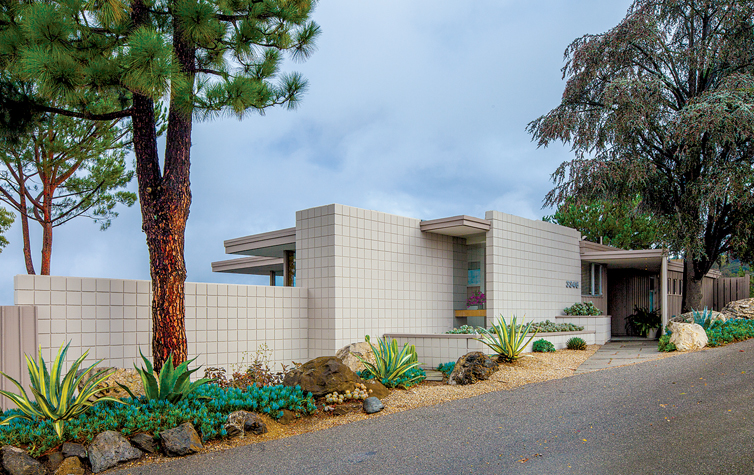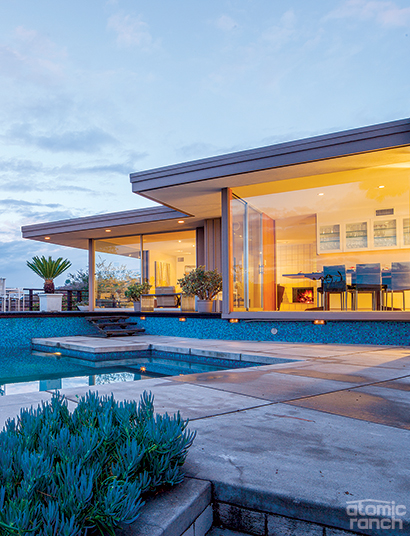
A fascination with geography and cartography has been with artist Chase Langford since he was a boy poring over the road maps in the glove compartment of his parents’ Ford station wagon. Today, he lives in a modernist home off Mulholland Drive in L.A. and also owns a postwar condo in the desert with his partner, Steve Ziel. The idea of a place being specific yet fluid has colored Langford’s fine arts career as well as these two 1960s homes, which are more first cousins than twin brothers.
The couple purchased the smallest model in a 340-unit condo development overlooking Seven Lakes Country Club in Palm Springs. Designed by Richard Harrison—who partnered with Donald Wexler from 1953 to 1961 on a variety of projects, including Royal Hawaiian Estates, the Alexander Steel Houses and El Rancho Vista Estates—the condo has two bedrooms and two baths. “In the ’70s and ’80s some of the homeowners enclosed their courtyards and didn’t necessarily follow the architecture as Harrison designed it,” says Ziel.
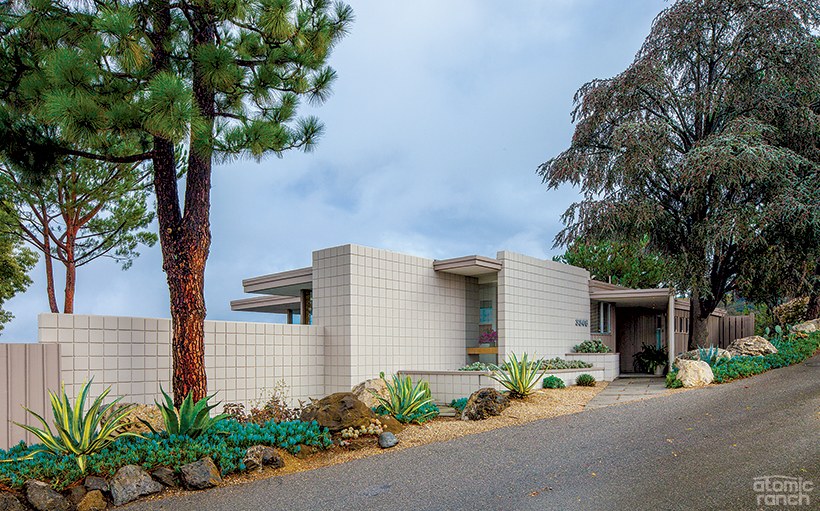
“There is a new wave of people moving in who are unbotching them, if you will, bringing them back to a much more sensitive midcentury intent,” adds Langford. “There was a period where they didn’t really monitor changes and people didn’t have today’s appreciation for MCM architecture. Everyone tried to make these clean, modern spaces more fancy and ornate.”
Their unit was original-ish but uninspired, they report: Pepto-Bismol colored walls, popcorn ceilings, ho-hum carpeting and 1980s tile. What recommended this modernist home was the location and potential.
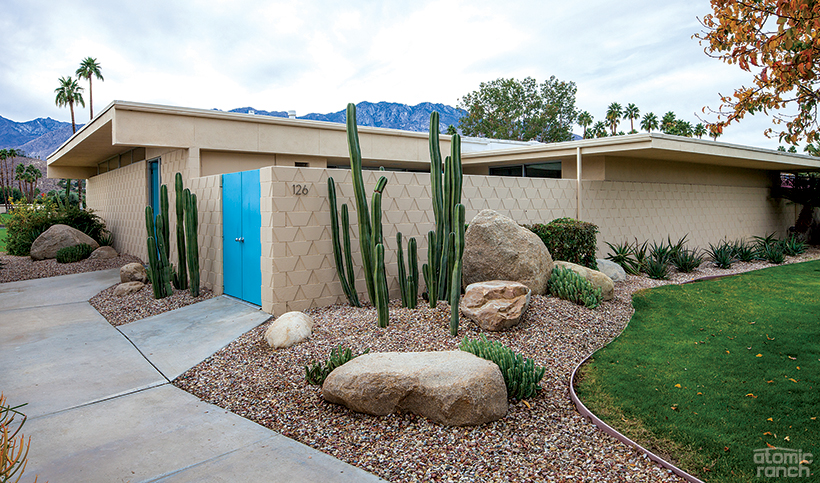
“In our L.A. home, we have an amazing view and you become accustomed to a view when you have one,” says Ziel. “Coming to Palm Springs, I didn’t want to be closed in with a walled back yard or hedges. We kept looking and looking for a vista without wires or a tree or another home blocking the view. The view out our 9.5-foot-high windows is grass, a small lake, then an entire mountainside and the Bob Hope house on Southridge.”
Getting from what they had to what they envisioned involved redoing all of the systems, along with new dual-pane windows and sliding glass doors, fresh flooring and gutting the kitchen and baths. “These condos were built very solidly,” Langford says. “The floors are plumb, roofs are thicker than in an Alexander and there’s a soffit where the AC runs, so we were able to abandon the [defunct] plumbing in the concrete slab and run new pipes and electrical through [that].
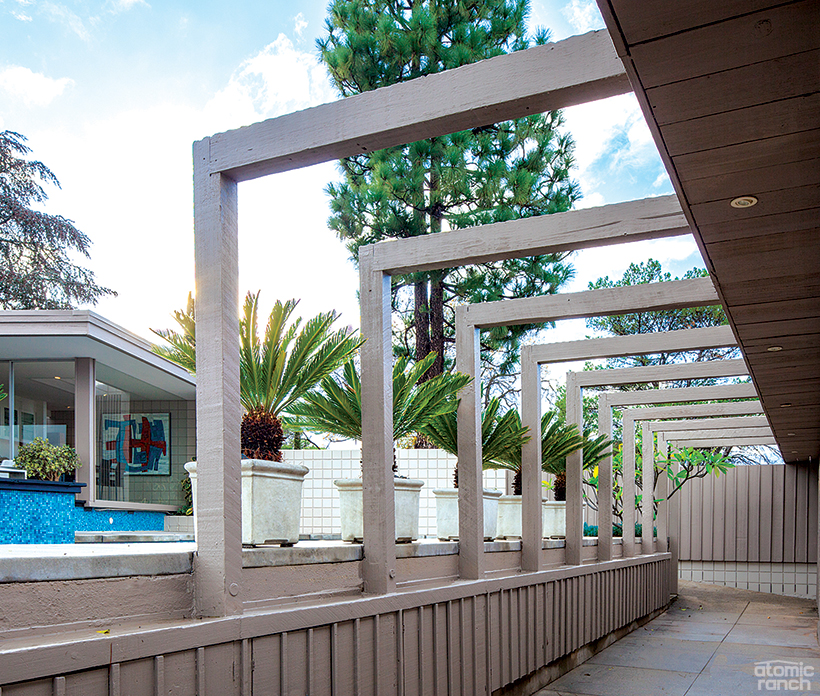
“In our L.A. house, the original kitchen cabinetry from the ’60s is good quality and we respect the design of it. But here, the cabinetry was poor, so it wasn’t anything that you wanted to keep. The architecture of these condos is superb, but I think the kitchens and baths were put in by the developer and they could have been better.”
“There was the architect and then there was the builder,” Ziel adds. “Some of the original homeowners had an extra window put in their kitchen or dining room, which breaks up the shadow-block walls. From the very beginning, you can see the rub that existed back in the ’60s and [the units] have more variation because of that.”
Langford’s flexible work schedule allowed him to come out four days a week to oversee the three-month project and help guard against change orders and redos. “If there was a material that was not available immediately, we moved on,” says Ziel. “And it was pretty much the bottom of the recession, so every subcontractor was available.”
Stay tuned to find out what fixtures made their Seven Lakes house a modernist home as well as what lies in store on Mulholland Drive in part 2 of this dual-house tour!

